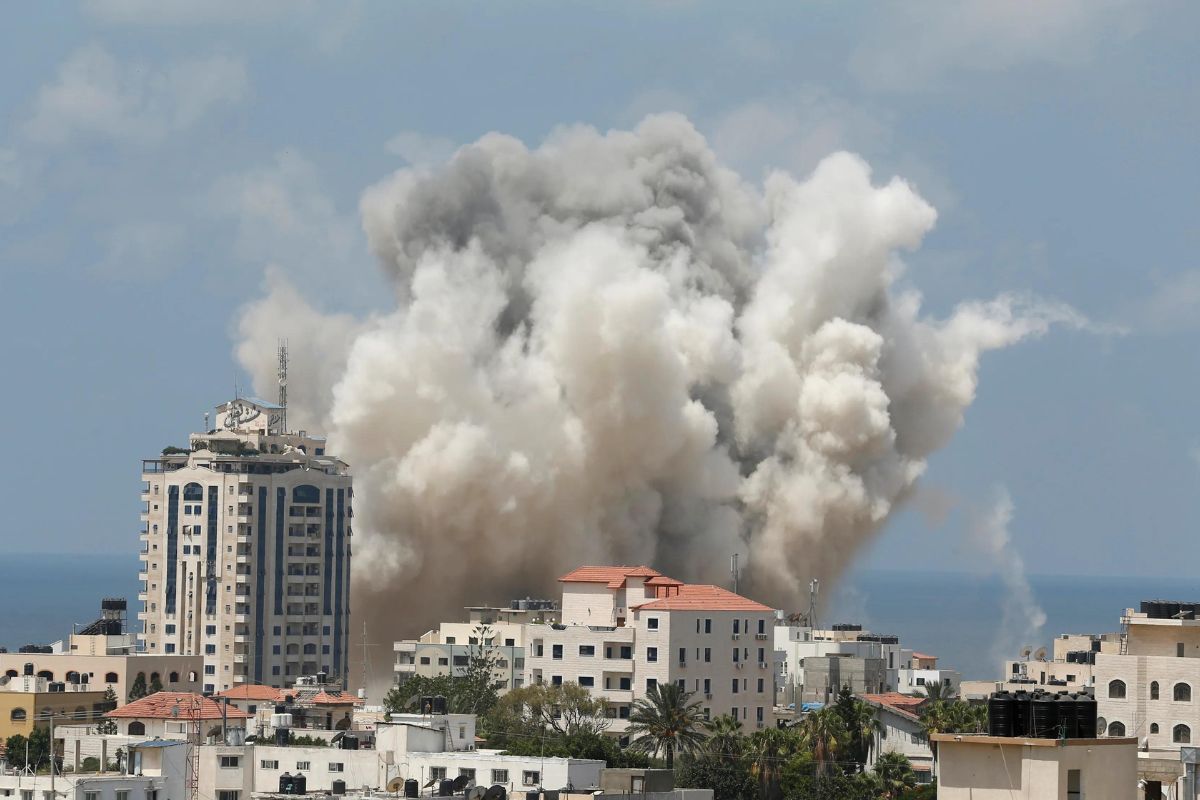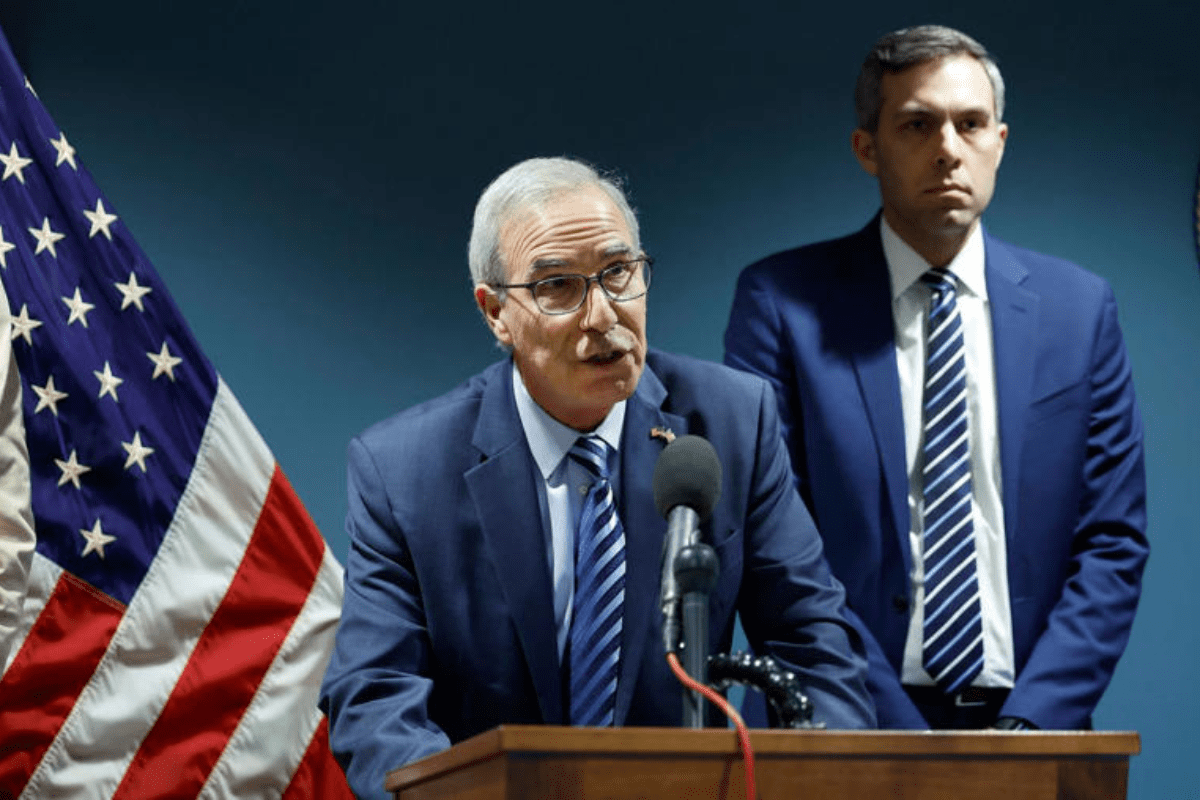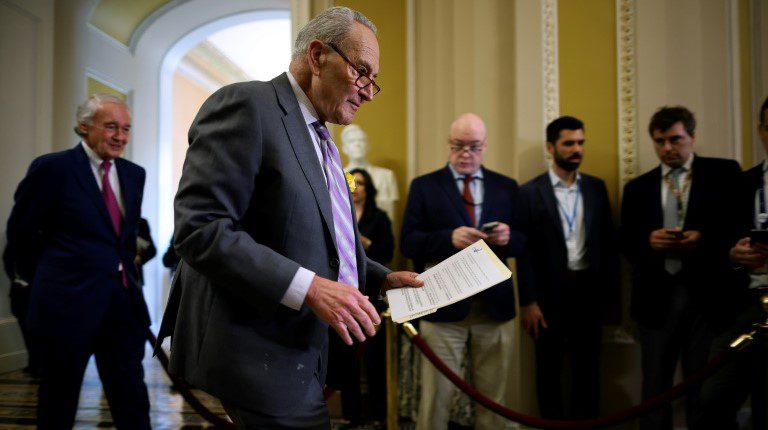The United States is pursuing two diplomatic tracks in Gaza, attempting to end the war through a cease-fire plan sponsored by President Biden
Joining discussions this weekend to reopen a corridor for aid into the enclave that was closed when Israel moved along the southern border with Egypt. Both efforts have their challenges.
On Sunday, a delegation of US officials will meet in Cairo with Egyptian and Israeli counterparts to explore how to restore the Rafah crossing, which has been used to evacuate extremely ill or injured individuals and provide gasoline.
Even if those talks are successful, obstacles will remain in delivering aid across the border, Gaza’s only non-Israeli entrance route.
Fighting and a lack of security in the Rafah region make aid delivery and distribution dangerous, according to humanitarian workers. They note that only a resolution to the issue would fix the problem.
Related Post – The US Grant Permission to Ukraine To Use Its Weapons To Attack Russia
Biden pushed Israel and Hamas to accept a three-phase plan that would put an end to hostilities for six weeks in return for the release of particular captives in Gaza and Palestinians detained by Israel, coinciding with the Rafah negotiations. Israel and Hamas have not yet given their approval to the road map, which advocates for a resolution to the conflict and has garnered the backing of several Western and Arab leaders.
In Israel, Prime Minister Benjamin Netanyahu’s far-right coalition members have threatened to leave the government if he accepts a deal that ends the conflict without first eradicating Hamas. In Gaza, Hamas militant leaders, who are desperate to stymie Israel in battle, are unlikely to accept the deal unless it ensures the group’s survival as enclave authorities.
The U.S., Egypt, and Qatar released a joint statement on Saturday night, putting more pressure on Israel and Hamas to secure the initial cease-fire and complete the agreement that reflects the principles that Biden articulated.
Read this – War in Ukraine – Russian Drone Plant That Could be Shaped
It was intended to be tough for Israel or Hamas to reject the demand for a cease to hostilities on Friday. Biden presented a previously undisclosed Israeli plan that American sources claimed was nearly identical to a formula that Hamas had just approved.
On Sunday, Israeli officials issued a highly politicized response to the cease-fire route proposal. In remarks made public by his office on Saturday, Netanyahu framed the plan as a method of attaining his ultimate aim of eliminating Hamas’ military and political apparatus.
According to his team, the initiative will reach its goals in the first, second, and third stages.
Benny Gantz a key figure in Israel’s government called for the implementation of the concept stating that Netanyahu’s cabinet had unanimously agreed to it. Gantz gathered his team for a meeting to figure out what to do next When asked if Netanyahu had voted for the plan his aides remained silent.
“The notion that Israel would agree to a permanent cease-fire without attaining all of its goals—meaning the return of all of the hostages, destroying Hamas’s military and governing capabilities and ensuring that Gaza can never be a threat to Israel—is a nonstarter,” a top Israeli official stated.
Hamas said in a statement that it welcomed Biden’s call for a permanent cease-fire and that it was willing to work constructively with any proposal based on the complete withdrawal of Israeli forces, the reconstruction of Gaza, the return of the displaced, and the exchange of hostages and prisoners.
Osama Hamdan, a Hamas spokesman, said Saturday that principles alone were insufficient to forge an accord. “It remains to be seen what exactly is planned, and what the actual Israeli position
US officials have recently attempted to mediate a deal between Israel and Egypt to reopen the Rafah border crossing and increase the flow of aid into Gaza. According to negotiations, Egypt’s military may train and shadow the Palestinian Authority Security Force at the border.
Israel took the Rafah border crossing with Egypt in early May, and no trucks have crossed since. Israel claimed it had to seize the road to prevent Hamas from rearming by transporting weapons through tunnels that extend into Egypt.
Last Monday, Israel stated that it had seized control of the Philadelphi Corridor, an approximately 9-mile border between Gaza and Egypt.
The Israeli military stated on Sunday that it was still searching for weapons and rocket launchers near the Philadelphi Corridor and conducting targeted operations in Rafah.
The meetings in Cairo on Sunday will take place against the backdrop of severe disagreements between Egypt and Israel about which Palestinian group should operate the border crossing.
Egypt has refused to reopen the Rafah gate while Israeli troops are present, and for more than a week has blocked the transfer of humanitarian aid through Egypt to the Israeli-controlled Kerem Shalom crossing, which has been a significant avenue for relief distribution.
On May 24 Biden received a temporary promise from Egyptian President Abdel Fattah Al Sisi to restore the flow of United Nations-provided assistance through the Kerem Shalom crossing.
In a statement made that day the White House stated that it would also push to reopen the Rafah crossing on terms acceptable to Egypt and Israel and that it would dispatch a team to Cairo.
The battle between Israel and Hamas in the Rafah region, which spans along the enclave’s southern border, has made it more difficult to distribute supplies and food in Gaza, where many people are already suffering from acute hunger, according to humanitarian workers.
Since the war began in October, more than two million Palestinians in the Gaza Strip have relied almost entirely on an often disrupted supply of aid given by the United Nations largely by trucks entering through two border crossings in Rafah: the Rafah crossing with Egypt and Kerem Shalom from Israel.
Humanitarian supplies into Gaza increased to more than 5,600 trucks in April from roughly 2,900 in February according to U.N. data humanitarian workers claimed deliveries sometimes fell short of what the war-torn territory required.
Israel claims to have allowed hundreds of trucks into Gaza every day in recent weeks and accuses the United Nations of failing to collect the aid. It states that hundreds of trucks had accumulated on the Gaza side of the Kerem. Shalom border crossing as a result.
In recent weeks, southern Gaza has relied almost solely on inbound aid via Kerem Shalom. Even before the conflict in Rafah escalated more than a million people in the strip were living in famine-like conditions with food insecurity experts reporting widespread malnutrition and a high spike in child mortality.
The Integrated Food Security Phase Classification, or IPC, a project that brings together experts from the United Nations aid agencies and research organizations, estimated in March that the number of people facing catastrophic levels of hunger has doubled since December.

Palestinian families claim they are once again battling with a lack of aid and food and that their plight is aggravated by the need to relocate over a million people have evacuated Rafah since the start of May the U.N. says.
Mustafa Muhammed, a parent who evacuated Rafah with his family to the heart of the Gaza Strip, says he is increasingly concerned about running out of milk powder for his 2-year-old child since humanitarian aid has stopped arriving.
To get aid you need to chase the trucks and attack them before they arrive at their destination,
Looting charity vehicles by Palestinian men has grown regular as the hunger crisis increases.
Muhammed stated that commercial product costs are always fluctuating, making it difficult to determine when is a good moment to buy.
One week ago I bought a bag of yeast for 30 shekels around $8 fearing it would disappear from the market I found it sold the next day for 7 shekels only. I was shocked, but this is a thing that often happens since the war began.
Families are crammed into tents on a beach strip called Al-Mawasi, which Israel has designated a humanitarian zone. They are straining to receive enough aid.
The situation there is terrible—no food or water and the airstrikes don’t stop claimed 25-year-old Majdi Musalamani, who was taking refuge in Al-Mawasi. He and his family just opted to relocate to Deir Al-Balah in the heart of Gaza.
Michael R. Gordon and Dov Lieber contributed to this article. Wsj.com

Mike Neon is a seasoned journalist specializing in United States news, known for his comprehensive coverage of national affairs and current events. With a career spanning 5 years in journalism, Mike has established himself as a reliable source of accurate and insightful reporting. His articles delve deep into political developments, social issues, and cultural trends shaping the United States today. Mike Neon’s dedication to providing balanced perspectives and in-depth analysis ensures that readers stay informed about the latest developments that impact the nation.







